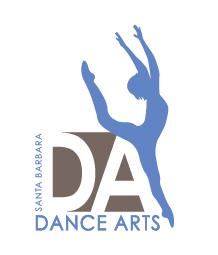It’s almost time for our Inspire Recital, which means that our students will be taking the stage soon to perform their new dances.
We know that the pre-performance jitters are real and can trip up even the most experienced dancers. But, with the right preparation, dancers should be able to overcome these anxieties, quiet their minds, and relax into the right performance mindset.
Here are our 5 tips for getting mentally and emotionally ready to take the stage:
1. Harness Your Energy
Before taking the stage, you will need energy to deliver a strong performance. You might feel tired or lethargic. In this case, you should try bouncing, doing jumping jacks, or listening to some upbeat music. If you are hyper, with too much energy before a show, you might need to do some relaxing stretches, close your eyes for a moment, or listen to soothing music. Having balanced energy will help you have an even performance.
2. Create a Routine
As a dancer, one of the best things you can do for yourself is to develop your ideal pre-show routine. This will help you minimize things to think about or make decisions about right before a show. Find a healthy meal that keeps you feeling nourished without being overly full. Find a warm up that gets your body fully prepared without over-exhausting you and avoid fatiguing muscles by holding static stretches like splits for a long time before taking the stage. Also, find a mantra that helps you feel confident and ready to go. If you always do the exact same thing before a show, you’ll have less to feel nervous about!
3. Control your breath
As you stand backstage or get ready in the dressing room, notice the rhythm of your breathing. If you’re feeling anxious, you’ll likely have a fast, shallow breathing pattern. Do your best to take long, slow, deep breaths -- filling up your lungs to their maximum capacity. This will help you calm your body and relax your mind. As you gain control of your breath, you’ll also gain control of your nerves and your thoughts. Remind yourself that you are going on stage because it is fun and because you love to dance! Nerves are natural, and they make performing more exciting. Just breathe and you will do well and have a great time doing it!
4. Mental Rehearsal
Ease your nervous mind with a visual rehearsal that you can easily complete in a crowded dressing room. Visualize yourself performing the whole dance flawlessly, in as much detail as you can, and tell yourself that it’s possible! Not only will this help you remember all the steps and sequence of the dance, but it will also help you build your confidence right before you take the stage. You’ll be less likely to feel stressed because you'll feel like you've already performed the choreography at least once that day.
5. Sink into your character
The last thing you can do to help yourself have an amazing performance is to get into the mindset of the character you’ll be portraying on stage. What kind of emotion are you trying to make your audience feel in your dance? Stand in the dark of the backstage area and feel those emotions for yourself. What story does your dance tell the audience? Close your eyes and sink into how that makes you feel. Lose yourself as you become your character. Then, go out there and leave everything on the stage and leave your audience INSPIRED!



